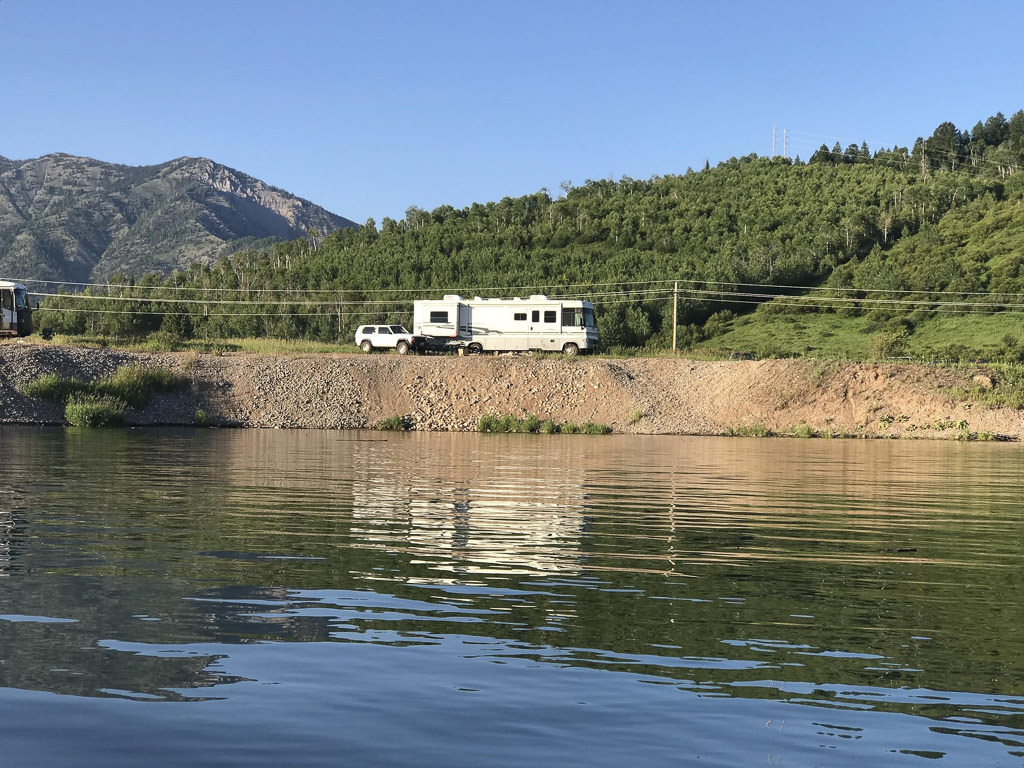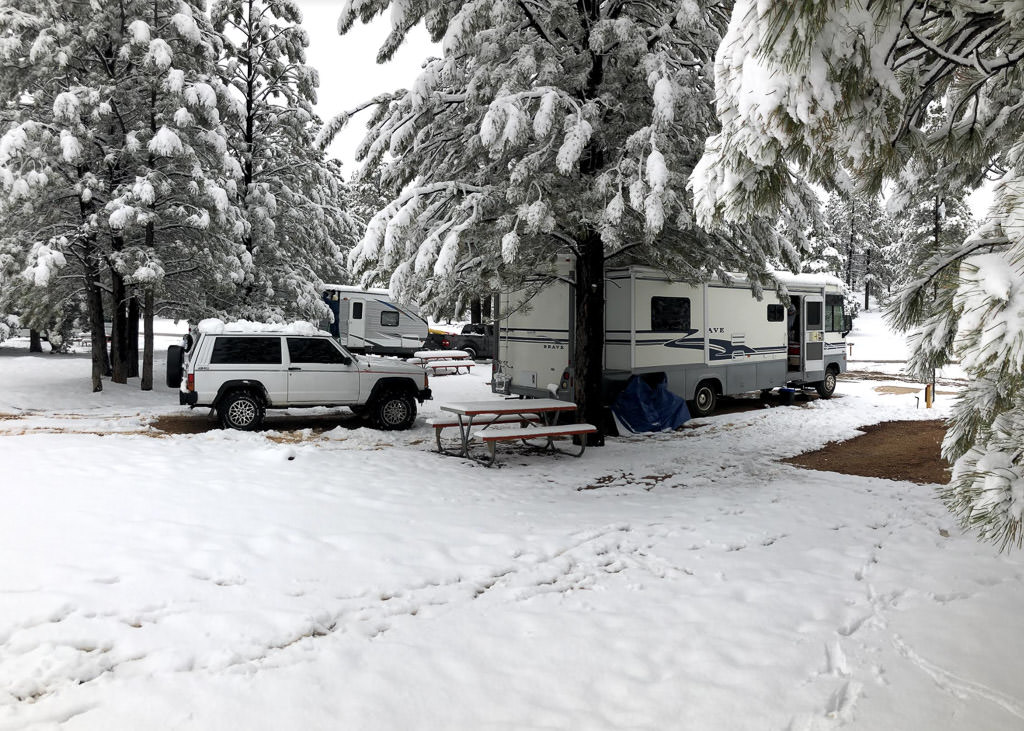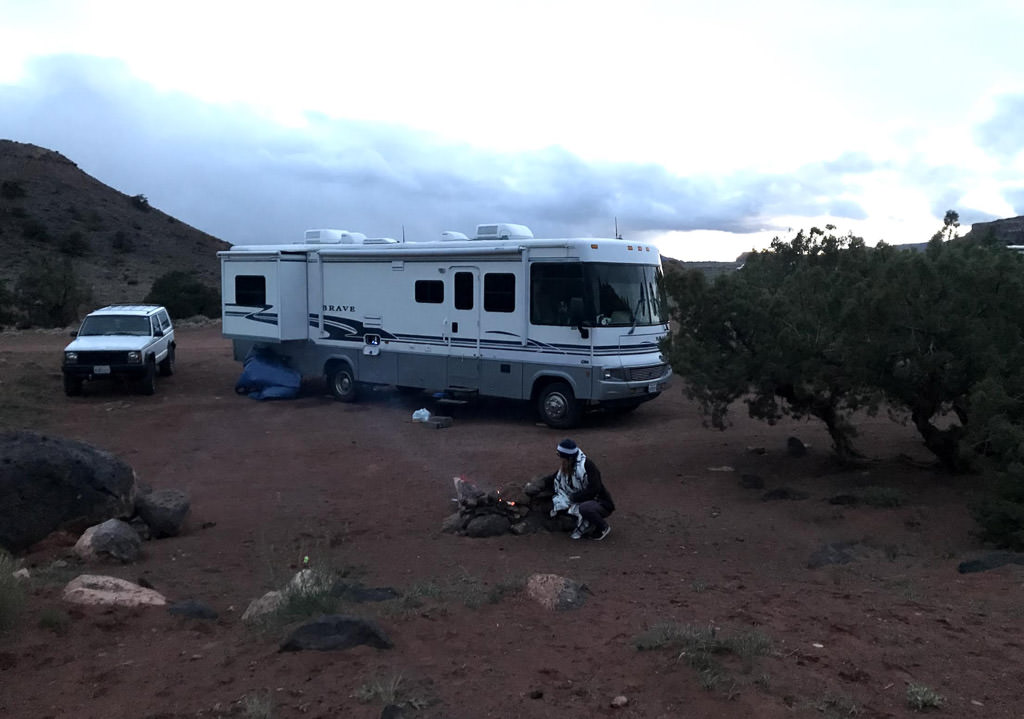
How to Plan Your Full-Time RV Route
It took us two months to plan our RV route for our first year of full-time RVing. It probably should have taken us closer to six months, but we were on a tight deadline with preparing for our wedding and all. So, we crammed in as much planning as we could and crossed our fingers.
If you're anything like I am, then you're already getting excited about the idea of planning what route you'll take in your Winnebago. You have your Excel sheet and calendar handy and you're ready to start planning away and get that coach on the road.
If you're anything like Jessie, then you're probably sighing at the thought of planning the entire trip. Jessie is flexible, he doesn't like to over plan, and can adapt quickly when things change. I, on the other hand, cringe slightly each time something doesn't go as planned and try desperately to adapt as well as Jessie does.
In the first five months of our journey, our route has needed to be changed almost as often as we've stayed on track. But, it's safe to say we have enjoyed every location. We've also learned a whole lot along the way and if we could rewind and give ourselves a bit of route planning advice, we would tell ourselves the following:
1. Dedicate Route Planning Time and Make it Fun
The very first thing Jessie and I did when it was time to map out our RV route was head to REI to get a map of the United States, a National Park book, and a special notebook we labeled just for route planning. (And, of course, I created a new Excel sheet).
At first, when we sat down with our new supplies, it felt overwhelming looking at the map and all of the possibilities. We really had no idea where to start and the map looked bigger and bigger each time we opened it. So, after a few frustrating nights, we scheduled a date night and went to a local coffee shop to have tea, cookies, and work on our route.
Being outside of our house and dedicating specific time just for route planning allowed us to get excited about the journey again, and lose those overwhelming feelings. We started circling National Parks that we just had to go to and connected lines from there. Before we knew it, we had what looked to be the first draft of our route.

2. Give Yourself a Few Days In-Between Short Stays
Most everyone called us crazy when we explained that the longest stay was a week and a half, and our average was only four nights in one place. Most everyone was right. Moving that much is completely exhausting and next year we'll look at monthly stays.
If your route is looking a bit similar with 3-4 nightly stays at a time, we highly suggest not immediately booking your next campground for the night of checkout. Say you have a Sunday-Thursday stay at a campground, it might be best to not have another campground reserved until Monday of the following week.
This way, if you fall in love with the place (which we did constantly), need to get maintenance done, or run into town, you can stay a few days longer. Plus, you can just about always find a Harvest Hosts or somewhere on the fly to stay for a night or two if you decide not to extend your stay.
When in doubt, head to the nearest visitor center or information center to see if there is BLM camping nearby. (BLM is public land where campers can camp for free with usually tons of privacy, making it a great place to stay for a night or two). The safest bet is to check with the local visitor's center first though to verify if there are any regulations like number of nightly stays allowed.
3. Plan Around the Weather, and Be Weather-Prepared
Traveling May through October, we knew the weather in just about every place we wanted to go to was going to be great. We did a bit of research to determine what states are best to visit in which months and defined what days to be where based on that. We also kept in mind when we would need full hookups (extreme cold and heat) and when we could boondock on BLM land.
Turns out, you can't predict the weather. We got caught in a snowstorm in Bryce Canyon, endured the 100-degree temperature in Salt Lake City, and spent a month in Washington's wet rain. Even with our extensive research and planning, we still endured the bad weather we tried to route around and didn't always have access to hookups when we needed them.

We learned quickly how to prepare our Winnebago for snow days and how to manage the AC and electrical usage in extreme heats, whether or not we had hookups. Make sure wherever you're going, that you know how to properly weatherize your Winnebago with or without hookups.
4. Have Backup Campgrounds and a Campground Membership
Originally, we thought planning route A to B was going to be the most difficult part, but it turned out to be the easy, fun part of planning.
Where it got really challenging was when it came time to find campgrounds or BLM land in each of the parks. It was so rare to actually find our first campground choice having availability for the exact dates we wanted. And that's where all of the switching around really began. Our RV route Excel sheet became a cluster of cells moving around constantly.
We started booking in January for May-October stays. For some locations like Denver, Yosemite, and all of Canada, that was not far enough in advance. Thankfully, halfway through our journey we got a ThousandTrails membership and that really helped us fill in the gaps. We also got comfortable boondocking and made sure to add 2-3 backup campgrounds to our RV route spreadsheet in case of emergency.
The most frustrating part of route planning with your motorhome is definitely this step. You get a lot of no's and head back to the drawing board. To help avoid this, try to book at least six months in advance, if not more. That's not always possible though, which brings us to the next point.
5. Allow Yourself to Be Flexible
Have no fear! Being told by campground after campground that there wasn't any availability actually helped us narrow down which places we really cared about visiting and which ones we could probably do without. It also taught us how to boondock and be flexible with our plans.
We had a handful of gaps in our finalized version of our route where nothing was planned and it gave me all the anxiety. But now, looking back, I wish we had more gaps on our route.
Changing our route based on availability or out of choice forced us both to learn how to be flexible.
So, no it wasn't a perfectly planned route even with all of the millions of hours we spent planning it. But for the most important destinations, we made sure to have somewhere to stay. The other ones we just kept calling or ended up staying somewhere completely different and loving the new location.

6. Don't Forget About the Details
There are a lot of details when it comes to RV route planning that no one really talks about. We did tons and tons of research, reading blog post and forums to try and prepare us for this unknown journey, yet there were still lots of details we had to just learn on our own.
When it comes time to sit down and plan your route, ask yourself the following questions first:
- Is a drive worth it? Does driving a bit farther with your toad but having a great campground matter more, or being able to walk from the campground to destinations? You may find yourself searching campgrounds 20-30 minutes away from your destination due to availability issues. That can be totally fine for some families who have a reliable toad and don't mind an hour roundtrip drive every day. Others need to be closer for work, cell reception, or because they don't have many days to spend there. Decide ahead of time if you can manage the drive or if it's worth paying for a closer campground.
- What is the cancellation policy of the park/campground? If you have an idea of how many days before you can cancel and what the fees are or how much you can get back, it takes a lot of the stress out of changing plans on the fly. Know what the policies are at each campground and when it's worth losing the first-night stay. We lost quite a lot of first night stays due to changing and canceling last minute. Honestly, neither of us regret all of those fees. But now, knowing how important it is, we've added a cancellation policy column to our RV Route Excel sheet.
- What are the size requirements? Our 34' Winnebago is the perfect size, in our opinion. A majority of campgrounds inside of National Parks don't have sites for rigs larger than 30'. So, we had to stay outside of National Parks and make the drive in each day. It was a sacrifice we were willing to make because we love those extra four feet, but you need to know what the size requirements are before adding a new campground to your route.
- Do I have access to our RV route offline? We transferred our route from paper to a spreadsheet right away. This was the easiest way to share our RV route with family and friends and make changes quickly. But none of that would have mattered if we weren't able to access it offline. You'll find yourself in no reception areas a lot, so make sure you can always easily access your RV Route and get to details like the campground address, phone number, and site number regardless of cell reception.
Flexibility is key when planning a new route with your Winnebago. Whether you're planning a year, six months, or four nights, leave plenty of room for extended stays and early cancellations.
Most importantly, don't beat yourself up if you don't make it to every dot on your map. We missed four places and have zero regrets about extending our stays in places we just couldn't leave.
Oh, and that RV route spreadsheet I keep talking about, here's how we set that up, in case you'd like to make one of your own using Excel or Google Sheets:

As shown, we added the information we thought would be important to have on hand. This included the campground name, reservation date, campground type, site number, date reservation was booked, check-in time, check-out time, whether it was full hookups, the confirmation number, the phone number to call for road closure info, RV park phone number, limitations, city and state, and the cancellation policy.
Did we miss anything? What information do you like to have when planning your route?
Comments
Comments on this post are moderated, so they will not appear instantly. All relevant questions and helpful notes are welcome! If you have a service inquiry or question related to your RV, please reach out to the customer care team directly using the phone numbers or contact form on this page .